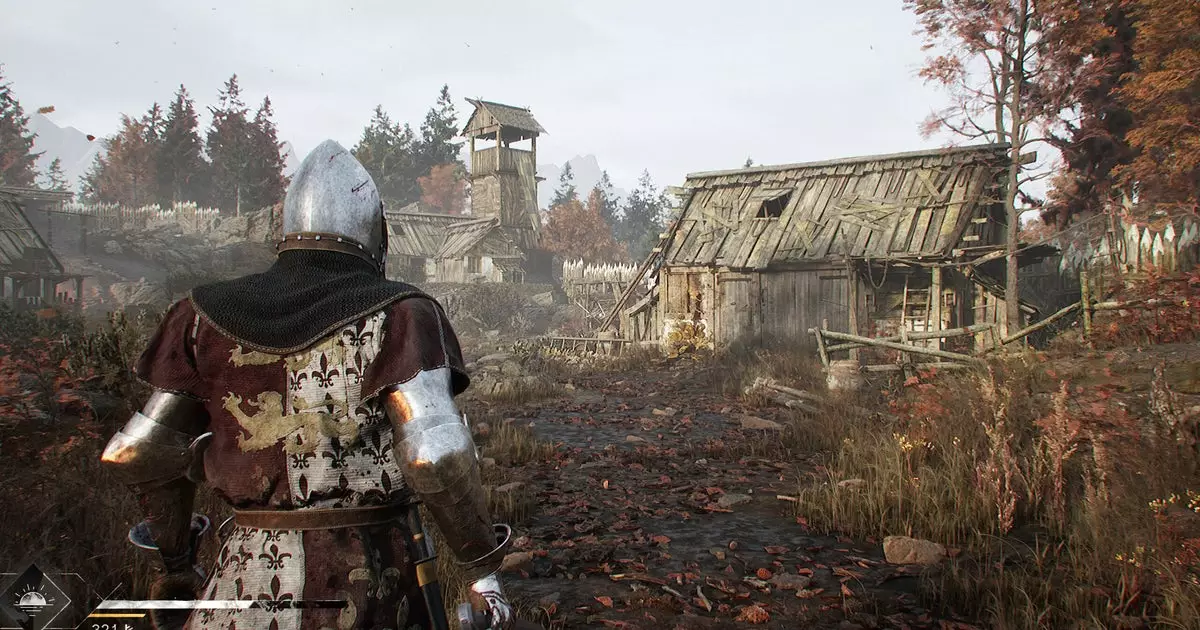In an age defined by vibrant open-world adventures and poignant narratives, Haenir’s upcoming horror-action game, Blight: Survival, promises to carve out a niche of its own—one filled with decay, dread, and dark humor. For years, this sinister project has lingered on the outskirts of the gaming community’s consciousness, attracting attention like a twisted vine creeping over a forgotten gravestone. With its recent advancements and new content drops, the buzz around Blight is beginning to swirl into a tempest of anticipation, and I’m here to dissect everything we know as this game heads towards its nascent release.
The Setting: A War-Torn Landscape
Set in a grim world torn apart by conflict, Blight: Survival presents players with a hinterland steeped in despair. The backdrop consists of two quarreling kingdoms, whose desperate war has given birth to a festering Blight that corrupts everything in its grasp. The villagers, once hopeful and vibrant, are now grotesque reflections of their former selves, transformed into undead husks. It’s a visceral environment, reminiscent of classic horror aesthetics—one that feels as if it has clawed its way out of a Lovecraftian fever dream.
This shattered realm is drenched in oppressive atmospherics; the swampy locales are not just a setting but a character in their own right. Decaying churches, nightmarish trees, and the pervasive sense of suffocating gloom mirror the inner turmoil of the characters who traverse this hellscape. The meticulously designed environments evoke a sense of helplessness while thrilling players with their ability to draw one into the depths of despair, proving that much can be told without words.
The Mechanics: Combat and Strategy
Blight: Survival isn’t just a pretty face in a putrid place; it also houses intriguing mechanics that have piqued my interest. The significance of “directional combat” cannot be understated. Unlike many games that stumble over the execution of this feature, Haenir’s iteration aims to engage players in the physicality of swordplay, making each swing and parry feel tangible and consequential. This level of immersion can transform a standard hack-and-slash routine into a thrilling experience where skill and timing dictate the outcome of every encounter.
Moreover, the game introduces an interesting twist on extraction-style gameplay, which raises the stakes considerably. Players must weigh the risk of battling their way through treacherous terrain filled with enemies against the potential rewards of valuable loot. This strategy element encourages players to make tough decisions, reflecting the often cruel nature of survival in desperate circumstances. How far would you push yourself before retreating to safety? It’s a question that may quicken one’s pulse and shatter the usual gaming monotony.
Community Engagement and Development
What intrigues me further is Haenir’s approach to community engagement. The company has actively sought player feedback by announcing limited closed playtests—an indication they value the opinions of their audience. This willingness to collaborate may elevate Blight: Survival from a mere game to a living project that evolves based on its players’ experiences. However, there’s also an air of caution; the influx of developers from a larger publisher like Behaviour Interactive may cause shifts in the game’s identity, as business motives often clash with artistic vision.
It’s essential to keep a watchful eye on how this development unfolds. Yes, the wealth of talent gathered under Haenir may yield a polished product, but it could also dilute the raw creativity that often births the most compelling gaming experiences. Will they retain the underground spirit that initially drew players in, or will they succumb to the pressures of commercial viability?
Cultural Commentary and Thematic Layers
Unlike many modern titles that layer their narratives with socio-political commentary, it seems that Blight: Survival does not preach. It revels in its chaos—the wild exploration of decay and death lacks any high-brow ambitions for deeper commentary. While this might deter players searching for existential depth, I find merit in a game that embraces its grotesque aesthetic without pretense. Not every narrative must unravel profound truths; sometimes, it’s enough to bathe in the escapist thrill of blood-soaked sword fights against a backdrop of despair.
There’s something liberating about engaging in a world where the rules are simple—the objective is survival, and distractions are evil monsters twisted by the Blight. It frees players to sink their teeth into visceral gameplay, focusing less on moral quandaries and more on mastering the art of survival against relentless foes. In an industry often cluttered with complex narratives, this approach carves out a raw, almost primal space that I can’t help but appreciate.
While many aspects of Blight: Survival remain uncertain, particularly with its release date looming in the abyss of ambiguity, the undercurrents of raw ambition and dark allure suggest that Haenir could deliver something wildly captivating.

